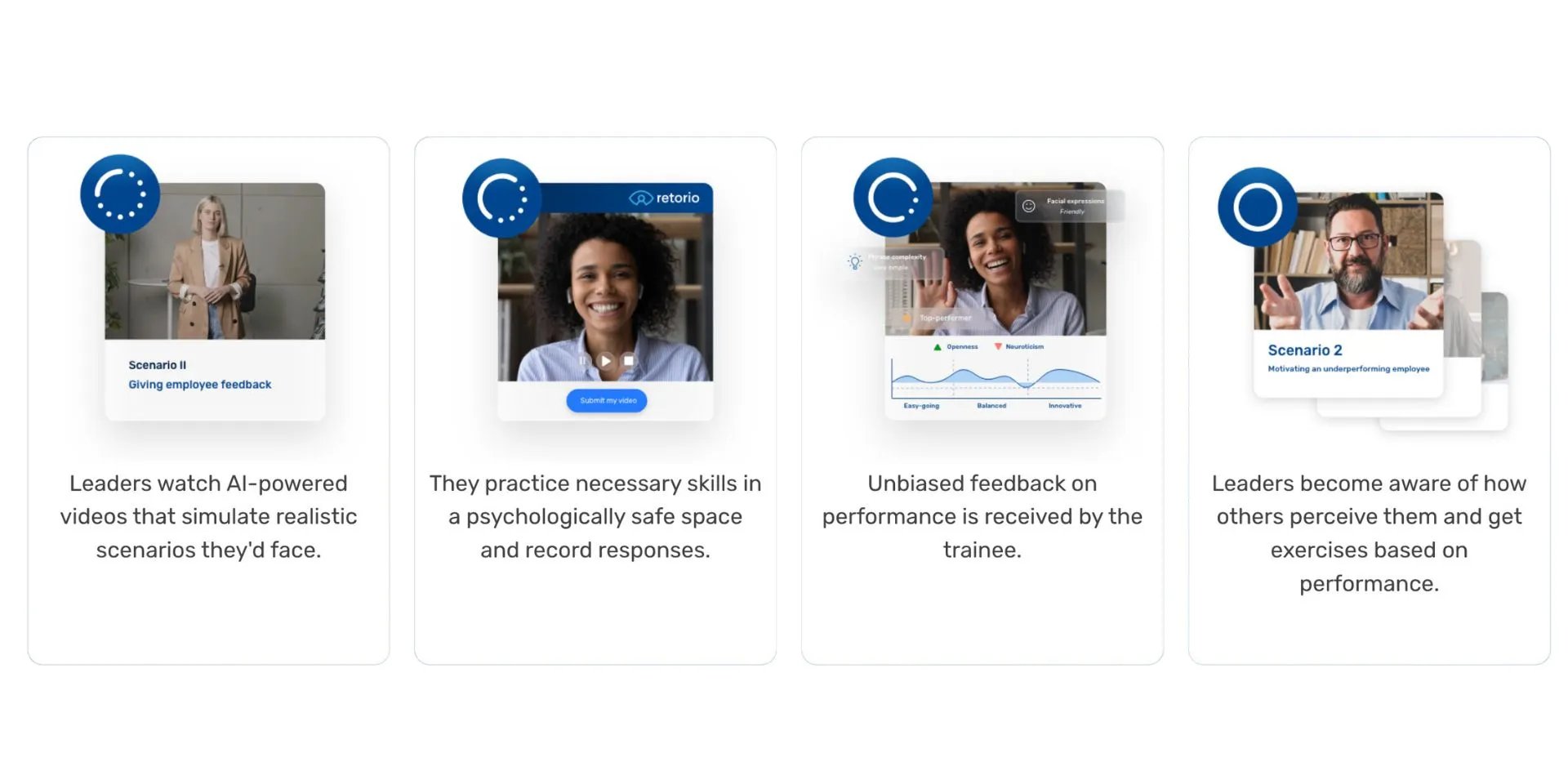Did you know that 60% of employees feel that their performance appraisals are not effective in driving performance improvements or fostering growth?1
Performance appraisals are essential to your organization’s success, but the process can feel like a daunting, overwhelming task. Managers often face the challenge of balancing the sheer volume of feedback and ensuring fairness, while employees might dread the experience, fearing it as a source of anxiety rather than motivation. Have you ever wondered why these appraisals can feel like a necessary evil, instead of a strategic growth tool? Are you struggling to find ways to make performance reviews a tool for improvement rather than just a procedural formality?
Have you ever wondered why these appraisals can feel like a necessary evil, instead of a strategic growth tool? Are you struggling to find ways to make performance reviews a tool for improvement rather than just a procedural formality?
The truth is, traditional performance appraisals often miss the mark. Yet, research suggests that organizations who implement effective performance management systems experience up to 14% higher productivity and 25% more employee engagement.2
How can you ensure your appraisals contribute to your team’s success instead of hindering it? Enter AI coaching – a transformative tool that can streamline the process, remove biases, and provide actionable insights that empower both managers and employees to thrive. AI-based coaching can help make appraisals smarter, more efficient, and, most importantly, result-driven. So, why wait? The future of performance management is here, and it’s powered by AI. Will you be ready to embrace it, or will you fall behind?
In this blog post, we have got you covered on all the essential things you need to know about a performance appraisal system. From what it is, to what you should look for in a performance appraisal system - read on below to find out.
What's in this post?
What is a performance appraisal system?
A performance appraisal system manages and measures an organization's employee's performance progress to evaluate a team's overall job performance. In a nutshell, a performance appraisal system is simply the method that you use to evaluate an employee's past performance and analyze performance trends.
It entails gathering qualitative and quantitative feedback and transforming the data into actionable insights.
The qualitative data can be collected through a questionnaire feedback form that HR distributes to the relevant people, an employee self-evaluation, direct reports, or observations by the manager. The quantitative data can be assimilated through KPI metrics regarding an employee's job performance.
By creating and monitoring goals, these insights can enhance employee productivity and output. A performance appraisal system also supports managers in conducting productive performance conversations that address all the key points and identify top-performing employees.
Traditional performance appraisals take place once a year where employees are oftentimes bombarded with feedback and leave the conversation with little to no steps on what to do next to improve. That is why implementing an effective performance appraisal system will help keep the conversations more structured and productive.

The traditional performance review process has been rapidly declining in popularity.
Several organizations have begun adopting modern performance appraisal methods such as the 360-degree appraisal that have proven to be more efficient in providing constructive feedback and generating a positive outcome.
Benefits of using performance appraisal systems
A performance appraisal system offers a variety of benefits that support performance management with tasks such as goal setting, goal tracking, and development planning.
Statistics have revealed that 5% of managers are happy with the traditional performance management system while 95% of HR managers are not satisfied with the traditional appraisal system.
With that being said, modern performance appraisal systems can be a big success for HRM when implemented well. A good performance management system contributes to the overall organizational performance improvement by managing the performance of teams and individual employees to ensure the achievement of organizational objectives.
However, there are other advantages that effective performance appraisal systems provide in bettering a company's employee performance and improving employee appraisals:
-
They help to ensure that employees recognize the significance of their contributions to the business's objectives by keeping track of what an employee has achieved throughout a specific time frame. Whether that be a training they took part in to improve certain skills or a specific KPI they aim to achieve, a performance appraisal system allows managers to measure an employee's performance and keep them accountable.
-
They help employees understand better what is expected of them, as well as determine whether employees have the necessary skills to meet their expectations. If there are skills that are missing, managers can take note of the skill gaps and use performance management software to note down training programs that will support employees in improving their performance, or identify training programs the organization is lacking.
-
They help ensure that the goals set during performance reviews are aligned with the company's objectives and the company's culture for long-term success.
-
They help managers build a friendly and harmonious relationship with their employees via trust and empowerment. This is due to the structure of a performance appraisal system that allows for open and honest communication to take place.
-
They allow managers to keep employees more engaged in their work by using a reliable system that keeps track of the employee's progress. This increases overall productivity.
-
They help managers support an employee's career development through the employee's performance feedback, pinpointing skill gaps that will help them expand their expertise for their current performance and future career opportunities, and recognizing their achievements.
-
A performance appraisal system also helps to spot performance trends that are doing well in specific employees. This information can be useful for HR to keep in mind when looking for new hires.

What are the types of performance appraisal systems?
There are numerous types of performance appraisal systems that you can adopt for performance reviews. All are a bit different but aim to deliver the same evaluation.
However, finding the right one that fits your organization depends on different factors: The variety of roles within your company, the amount of time you can invest in a performance appraisal process, and what your objectives are for carrying out a performance review.
It's good to know you do not have to stick to one method. Performance appraisals are relatively flexible, which means that you can always implement elements from other methods within your review meetings.
Without further ado, below are the types of performance appraisal systems that you can look into to use for your upcoming evaluation.
| Type of performance appraisal system | Explanation |
| Management by objective |
Behind this modern assessment process is also the method that is most commonly used by organizations. This process involves both the manager and employee jointly setting SMART goals that mirror what the employee wants to achieve to improve their performance and skills in a specific time period. This system is a process, not a one-time conversation, and often takes place every half a year. It is all about preparing beforehand and being proactive rather than reactive towards situations and events. It is considered to be a fair method since it minimizes subjective bias, is inexpensive, and promotes self-awareness which should increase an employee's ability to contribute effectively to the team. |
| Straight ranking appraisal system |
This system compares all employees to each other, essentially rating them from highest-performing to poorest-performing according to specific criteria. This type of system is not often used and is suggested to avoid as it can cause conflicts and tension in the workplace. Employees can end up developing a negative perception of their company as well. This system is often used in a sales situation or a call center where a list of employees is displayed, showing which employees have achieved the highest to lowest sales or volume of calls. |
| 360-degree feedback |
This system involves working with an armful of feedback. It may be a lot of work, but it sure is worth it. The key element of this system is identifying the employee's strengths and areas of improvement by collecting feedback and insights from everyone in the organization that an employee works with the most: Peers, other managers, and clients can all provide valuable insight into an employee's performance on what they do well, and where they can perform better in. At the end of the feedback collection, managers can get a well-rounded view of an employee's contribution to the company's success. Not only does this system provide management with a clear overview of an employee's attitude and behavior, but it can also benefit employees for self-improvement when understanding more about how they are being perceived not just by their manager, but also by their colleagues and customers. |
| Employee self-assessment |
This appraisal system encourages employees to take on an honest assessment of themselves and reflect on their own work performance. Managers often combine this system with the Management by Objectives method as a way to let employees do a personal evaluation themselves and then share their points in the discussion. This self-appraisal system engages and involves the employee more than the others because it puts the employees in charge of identifying their own strengths, roadblocks, and areas for improvement. This also includes coming up with an action plan on how they can achieve their goals. |
| Trait and behavior-focused appraisals |
Trait-based appraisals evaluate employee performance through the traits that contribute to an employee's personality, such as creativity, extroversion, and level of confidence. For example, it can also be assessed by observing how kindly a customer service representative addresses a customer, for example. However, the downside to this appraisal is that it is difficult to set quantifiable goals for improving an employee's character qualities.
Behavior-based assessment focuses on an employee's ability to execute certain activities. This system can be beneficial for measuring quantitative job performance and determining which employee to reward based on their competence in their tasks. However, this tends to be a more objective approach in judging employee performance and can be difficult to build off of in terms of work quality. |
|
Behaviorally anchored rating scale |
This system incorporates the trait-based appraisal and the behavior-based appraisal together. This system benefits those who work on detailed tasks that require a high level of accuracy, but also need to possess a certain set of attributes such as empathy and care.
Therefore, this scale rates an employee's behavior as they perform a task on a scale ranging from excellent to poor i.e. from completing their task precisely and on schedule to failing and not being able to deliver their task.
This technique is a combination of different systems. It is relatively well-rounded but specific to certain job roles. This system is regarded as a fair and easy way to analyze and quantify employee performance as it can be tailored to the various activities required by each employee within the organization. It also implies that employees can identify the behaviors that they will need to improve on in order to receive higher evaluations in the future.
|
Three main features to look for in a good performance appraisal system
A performance appraisal system should be easy to use, yet help you to produce a strong outcome for your organization. They should streamline your performance appraisals and serve as a platform where you can receive and deliver constructive employee feedback by saving time and costs. However, when looking for a performance appraisal system, there are three main things you should keep your eye out for.
Customizable
Customization is great, especially when it comes to HR tools such as a performance appraisal system. It helps managers to:
-
Align the goals that are set during the review period with the organizational goals.
-
Ensure fairness when it can be tailored to specific employee needs and objectives.
-
Support employee development in identifying skill gaps and L&D opportunities.
-
Involve employees in the process when it is customized to their individual performance to improve engagement and boost motivation.
This all results in more accurate evaluations and improved outcomes. Performance appraisal systems should be able to customize workflows, approvals, and goals.
Can be combined with other HR tools
Instead of choosing a performance appraisal system that is simply just that, look for one that can be integrated with other HR tools such as onboarding, regular feedback sessions, payrolls, and offboarding. When combined with other powerful tools, the entire appraisal process can become even more customized and productive for both the manager and the employee.
Collects 360-degree feedback
It's been mentioned time and time again in this series of performance appraisals, but 360-degree feedback can never do you any wrong. Therefore, make sure to look for a performance appraisal system that allows you to collect feedback from various sources: peers, superiors, clients, suppliers, other team members, other managers, etc.
A well-rounded feedback session will help you identify strengths and weaknesses much faster and more efficiently. Therefore, a performance appraisal system that allows you to do so will help you get an in-depth evaluation of an employee's engagement and performance.
When it comes to learning how to be your best self in the workplace, Retorio has got you covered. We understand the importance of knowledge, and that when it comes to learning, high-quality, personalized training is exactly what you need to fast-forward your learning process. With Retorio's AI Coaching platform, you can practice real-life scenarios with AI-powered role-playing that will guide you to become a master at communicating with your employees.
You can practice in a psychologically safe space, 24/7, from anywhere in the world. Practice on your smartphone, tablet, or laptop and soon become the performance appraisal master who can handle any evaluation process with ease and efficiency. Sounds too good to be true? It isn't! Retorio contains a library of training programs that will speed up your learning journey and increase performance improvement by 80%!

Or even better - create your own training within minutes and create personalized learning paths for each of its participants.
But there is so much more than just that! Wait no longer - click on the button below to get started.
FAQ's for Performance appraisal system
Performance management is the process of proactively controlling an employee's performance and ensures that the employee has met all of their goals that are aligned with the organization's objectives, vision, purpose and core values. Performance appraisals on the other hand simply looks at the employee's performance objectively throughout a specific period of time (often 6 months to a year), and provides the employee with a final feedback that discusses their strengths, and areas of improvement.
A performance appraisal tool (PAT) is known as an online tool that is secure to use when performing performance evaluations. It is a tool that assists managers and employees towards a more efficient and meaningful performance management process.
A performance appraisal system is a structured process used by organizations to evaluate and enhance employee performance. It involves setting clear objectives, providing regular feedback, and identifying areas for development. This system is vital for aligning individual efforts with company goals, recognizing achievements, and addressing performance gaps.
An effective performance appraisal system typically includes:
• Goal Setting and Alignment: Establishing clear, measurable objectives that align with organizational priorities.
• Continuous Feedback: Providing regular, constructive feedback to guide employee development.
• 360-Degree Feedback: Incorporating perspectives from peers, subordinates, and supervisors to offer a comprehensive evaluation.
• Development Planning: Identifying training needs and career growth opportunities based on appraisal outcomes.
360-degree feedback gathers insights from various sources, including managers, peers, and direct reports, offering a well-rounded view of an employee’s performance. This approach enhances self-awareness, reduces biases, and fosters a culture of continuous improvement.
Technology streamlines the performance appraisal process by automating administrative tasks, facilitating continuous feedback, and providing data analytics. Utilizing platforms like Retorio can enhance the efficiency and effectiveness of appraisals, making them more engaging and insightful for both managers and employees.
Common challenges include:
• Resistance to Feedback: Foster a culture of open communication to make feedback a constructive tool for growth.
• Inconsistent Evaluations: Standardize appraisal processes and provide training to ensure consistency.
• Insufficient Follow-up: Develop action plans based on appraisal outcomes and monitor progress regularly.
Integrating AI-powered solutions like Retorio can help address these challenges by providing objective data and facilitating continuous feedback.



